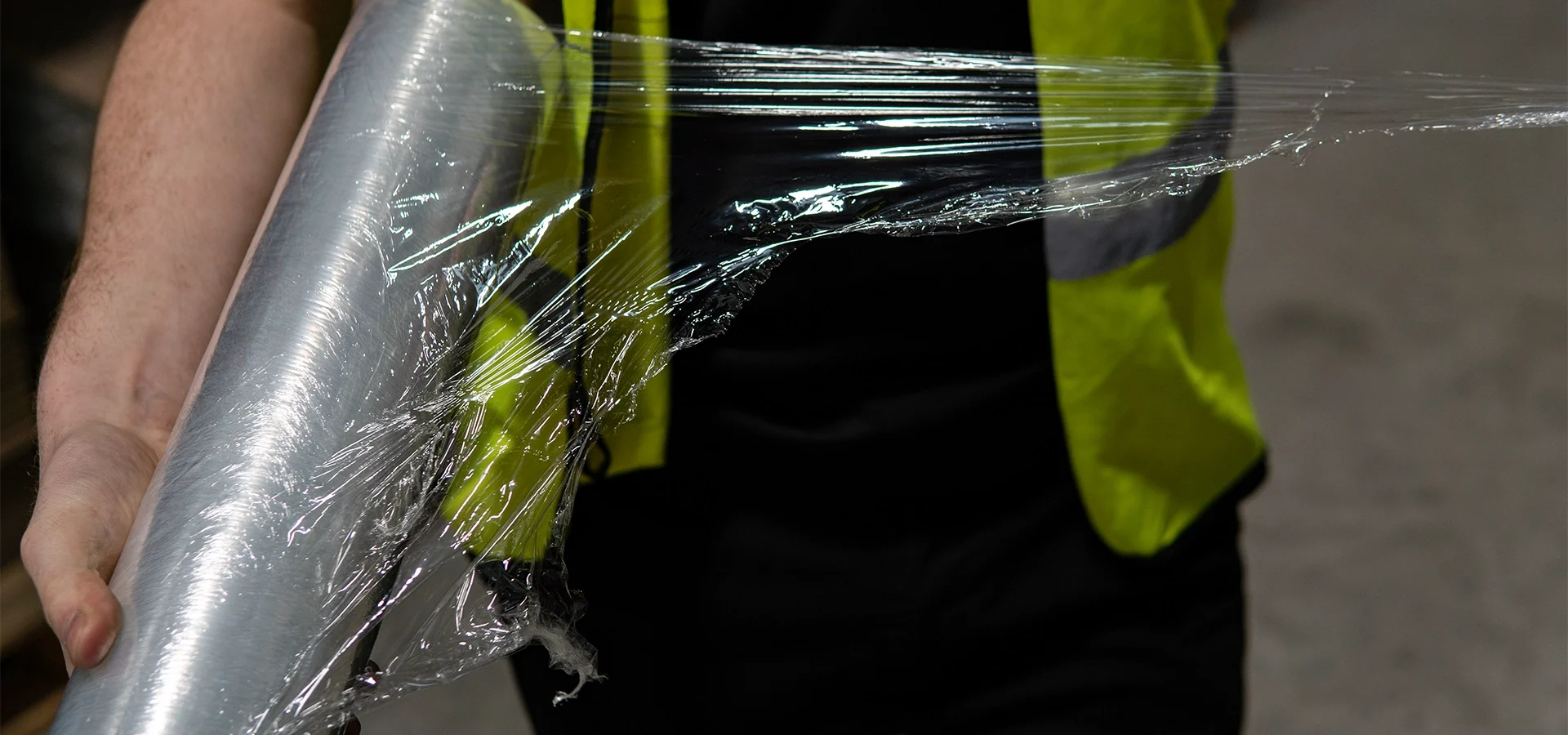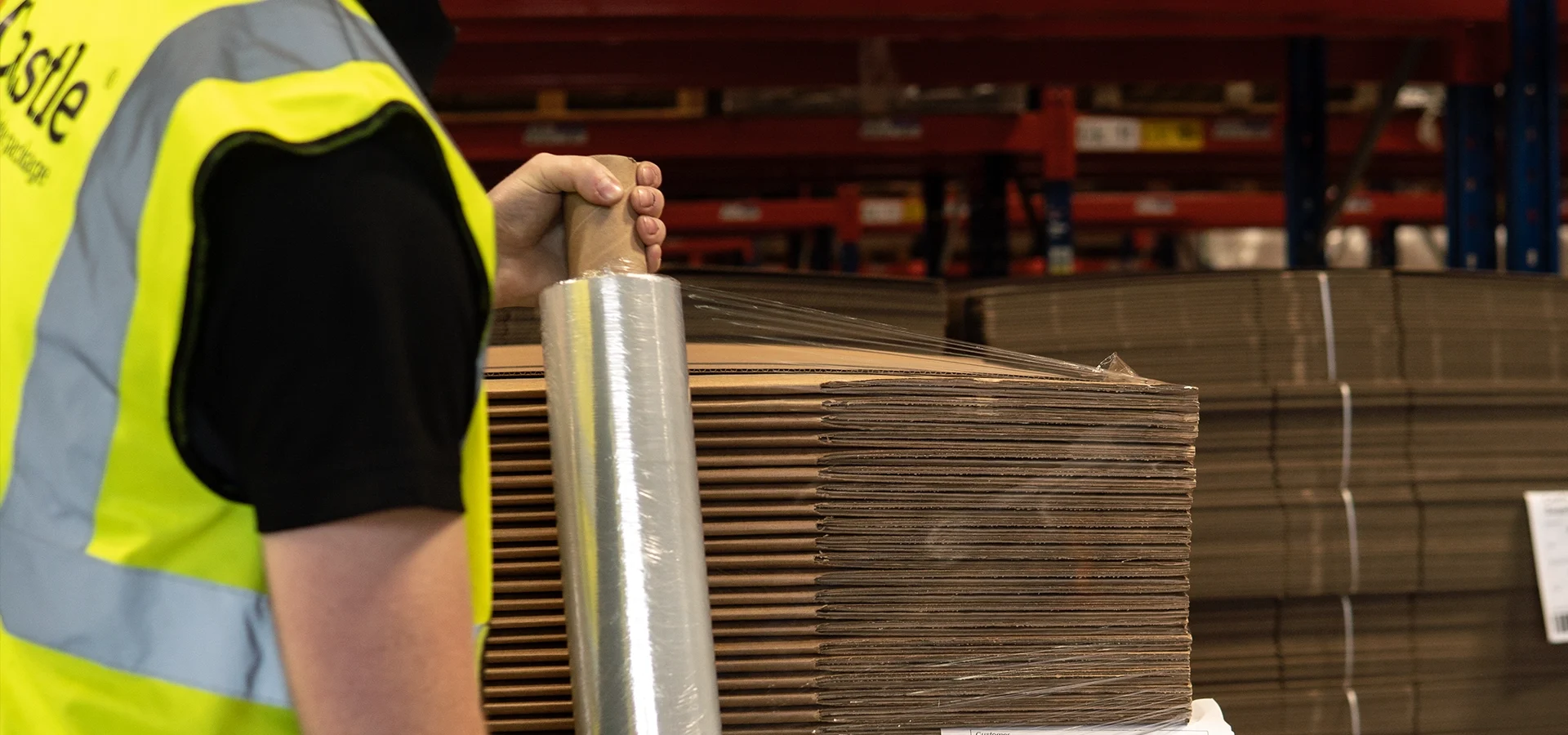In bustling warehouse environments, there are few things as frustrating as snapping pallet wrap. Particularly if you’re expected to wrap throughout the day and are faced with issue every SINGLE time.
We all know how important pallet wrap is to ensure the secure transport of goods, yet when it fails, the consequences can vary from damaged products to safety hazards for staff.
In one such instance, a client we’ll call Laura, shared an incident where snapped wrap led to a toppled pallet of glassware. Which meant not just time spent clearing up, but hours on revising protocols too.
Common Causes of Pallet Wrap Snapping

So, why does pallet wrap snap? And how can you prevent such mishaps? Let’s start by looking at some of the most common causes…
Material Quality Issues
Low quality or expired wrap:
Using subpar or old wrap can compromise its elasticity and strength. Wraps that have been stored for years often become brittle when used.
Wrong thickness:
Choosing a wrap that’s too thin for heavy or sharp-edged loads increases the risk of tearing.
Environmental Factors
Extreme temperatures:
Extreme colds can make the wrap brittle, while excessive heat can reduce its tensile strength.
UV exposure and humidity:
Prolonged exposure to sunlight can degrade the film and high humidity can affect its adhesive properties.
Load Characteristics
Sharp edges:
Items with sharp corners or protruding parts often puncture the wrap.
Irregular Shapes:
Uneven loads can create tension points, which consistently lead to tears.
Application Errors
Incorrect Tension:
Wrapping too tightly can overstretch the film which leads to obvious breakages, whilst wrapping too loosely can result in inadequate support for your goods.
Insufficient Overlap:
Not overlapping the wrap adequately can create weak points, which become tested in transit.
Inconsistent Wrapping Patterns:
Random or haphazard wrapping can lead to an uneven distribution of tension.
Machine-Related Issues
Malfunctioning Equipment:
Machines with incorrect settings or worn-out parts often apply the wrap improperly and provide insufficient protection.
Lack of Maintenance:
Neglecting regular machine upkeep can result in uneven application or excessive tension.
Preventive Measures to Avoid Pallet Wrap Snapping

So, with the causes identified, the next step is to start putting into place some preventative strategies for the road ahead…
Material Selection
Choose Quality Wrap:
It’s well worth investing in quality wraps, like our nano range, if you’re concerned about the multiple costs of damages. If cost is focus for your business, nano has actually helped to save plenty of our customers money in the long run, as seen in this case study.
Regularly Update Stock:
Avoid using old or expired wraps. Implement a First-In-First-Out (FIFO) system to ensure freshness.
Proper Load Preparation
Secure Goods:
Ensure items are placed correctly on the pallet, minimising overhangs and uniform patterns.
Use Protective Materials:
For items with sharp edges, consider using edge guards or padding to prevent punctures.
Correct Application Techniques
Training:
Regular training sessions can ensure that both new and experienced employees stay up-to-date with best practices.
Ensure consistent tension and overlap:
Whether wrapping by hand or machine, maintain consistent tension and ensure an adequate level of overlap between layers.
Maintain Equipment:
Regularly service and calibrate wrapping machines. I recall a warehouse where regular maintenance checks reduced wrap snapping incidents by 40%.
Environmental Controls
Store Wraps Properly:
Keep wraps in a controlled environment, away from direct sunlight and extreme temperatures.
Monitor Application Conditions:
If wrapping in varying environmental conditions, adjust techniques accordingly. For instance, in colder environments, consider using wraps designed for low temperatures.
Advanced Solutions and Technologies
As the packaging industry continues to evolve, innovative solutions offer the answers to some age-old problems…
New Materials
Nano film:
The use of higher-grade polymers in their composition means added strength and flexibility when it comes to wrapping.
Pre-Stretch Films:
Pre-stretched during the manufacturing process, this film offers consistent tension and greatly reduces the effort required during application.
Automated Wrapping Systems
Investing in advanced machinery could also change the way you operate for the better…
Precise Tension Control:
Some machinery offers the option to control the tension of your wrap, ensuring optimal tension and reducing the risk of snaps.
Consistent Application:
Machines, to an extent, eliminate human error as well, which provides uniform wrapping every time.
Conclusion
Pallet wrap snapping is more than just an operational nuisance; it’s a challenge that impacts safety, efficiency, and profitability. But, by understanding the causes—from material quality to application techniques and equipment maintenance, warehouse and logistics professionals can implement effective strategies to mitigate these risks.
Remember, the key lies in proactive measures: choosing the right materials, training staff, maintaining equipment, and staying ahead of industry innovation.


 Call 01524 734040
Call 01524 734040  Email sales@castleindustrial.com
Email sales@castleindustrial.com  We're here Monday to Friday 7am - 5pm
We're here Monday to Friday 7am - 5pm